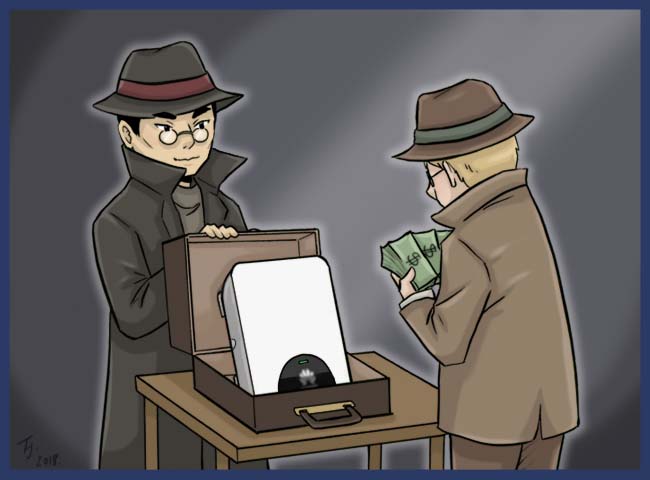
Huawei were not allowed to bid for the NBN due to spying concerns. But their solar inverters look pretty good.
Huawei is a giant Chinese company and the world’s largest producer of solar inverters going by gigawatts of capacity. This fact is hardly known here but it’s not surprising because if you go to their Australian website you’ll see a woman with cheekbones from hell and no mention of inverters at all. They are far more interested in selling mobile phones, tablets, and what they call “wearables” which appear to be for people who haven’t yet realized watches are no longer a thing.
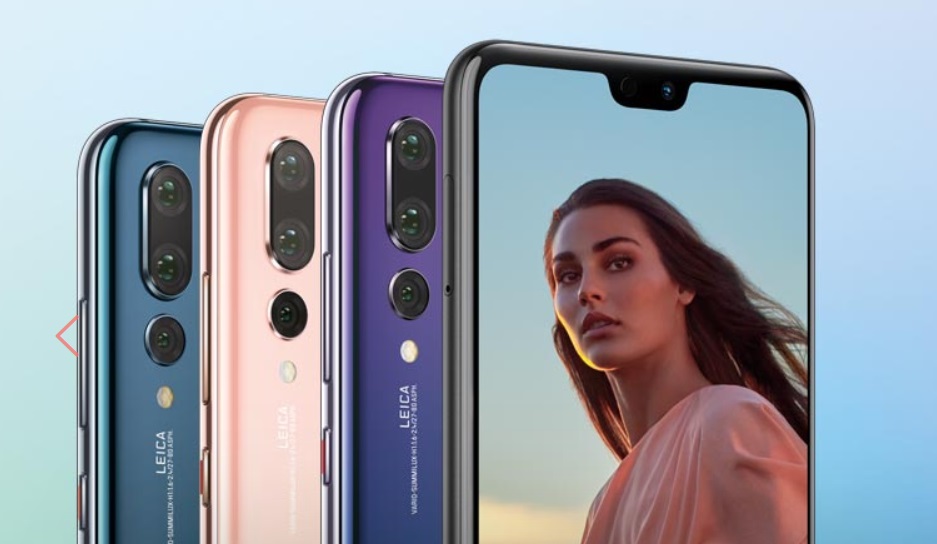
With cheekbones like that your boxing career is over before it has even started.
If you want to find out about their inverters you have to go to their other site that can’t be reached from the main one. I don’t know why they’ve done it that way. It’s almost as if they think people looking for a mobile phone won’t be interested in grabbing a solar inverter or two while they’re at it.
Going to their Australian inverter site and clicking on “residential” will bring up information on their SUN2000l series of solar inverters.
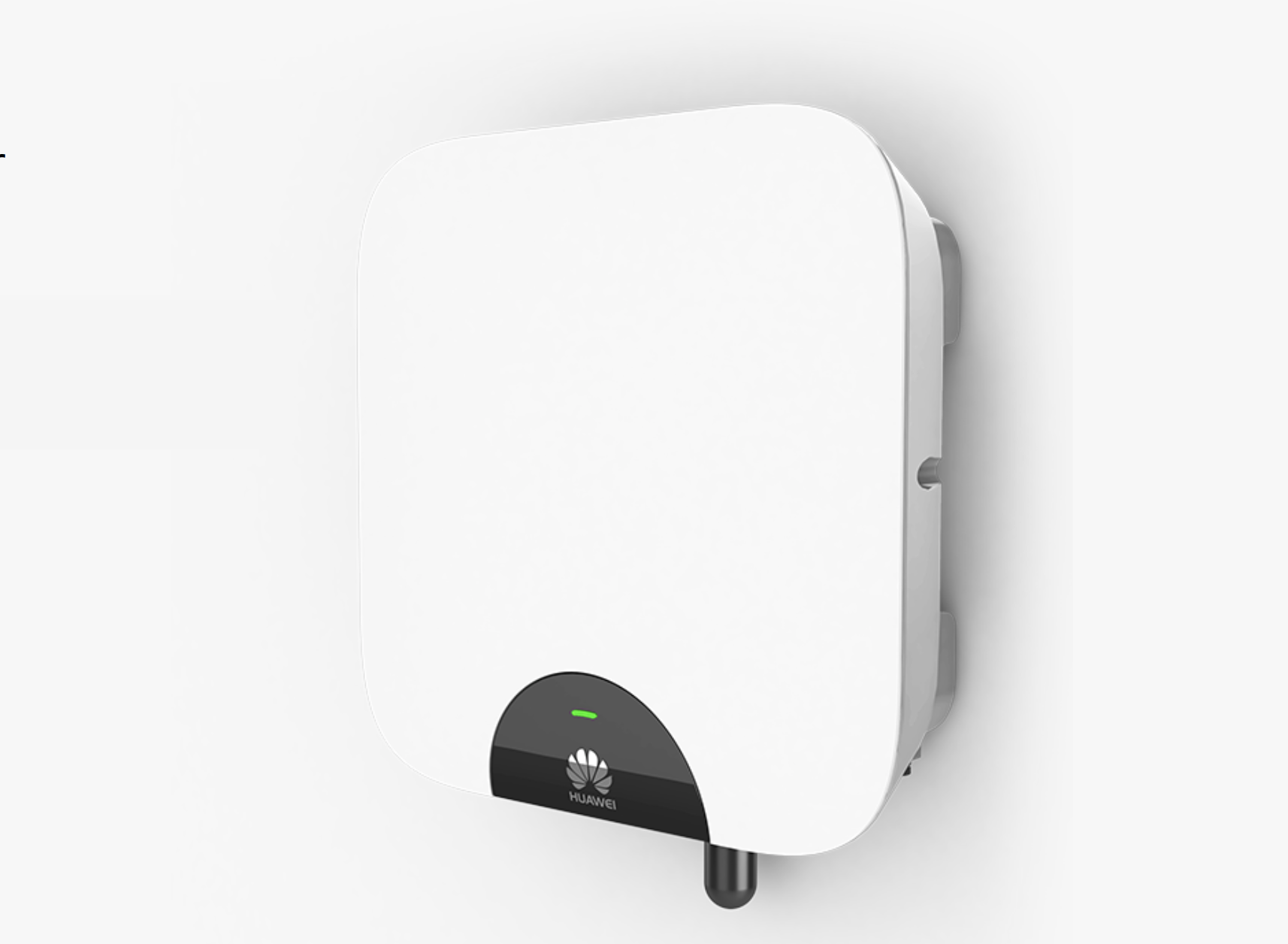
The Huawei SUN2000l solar inverter
These are single phase inverters ranging from 2 to 5 kilowatts in capacity. I was surprised to see these are all multimode inverters — also known as hybrid inverters — and can be used with battery storage. The only compatible battery system listed is the LG Chem RESU 7H and 10H. The inverters can’t provide backup power during a blackout, but are a low cost option for people who want home energy storage.
Even if they weren’t multimode I would say they were competitively priced. Fortunately, considering they are the world’s largest producer, Huawei appears to know how to make inverters that don’t fail miserably soon after you buy them and offer an above average warranty. For their residential inverters they have a 5 year full replacement warranty with an additional 5 years after that where they will provide a free replacement inverter or parts but won’t pay for labour. This is best standard warranty for any Chinese inverter I know of.
Huawei also produces solar panel optimizers that help get the most out of your solar panels. I’ve looked though their installation manual and there is no indication their inverters require these optimizers, so you are free to take them or leave them as you desire.
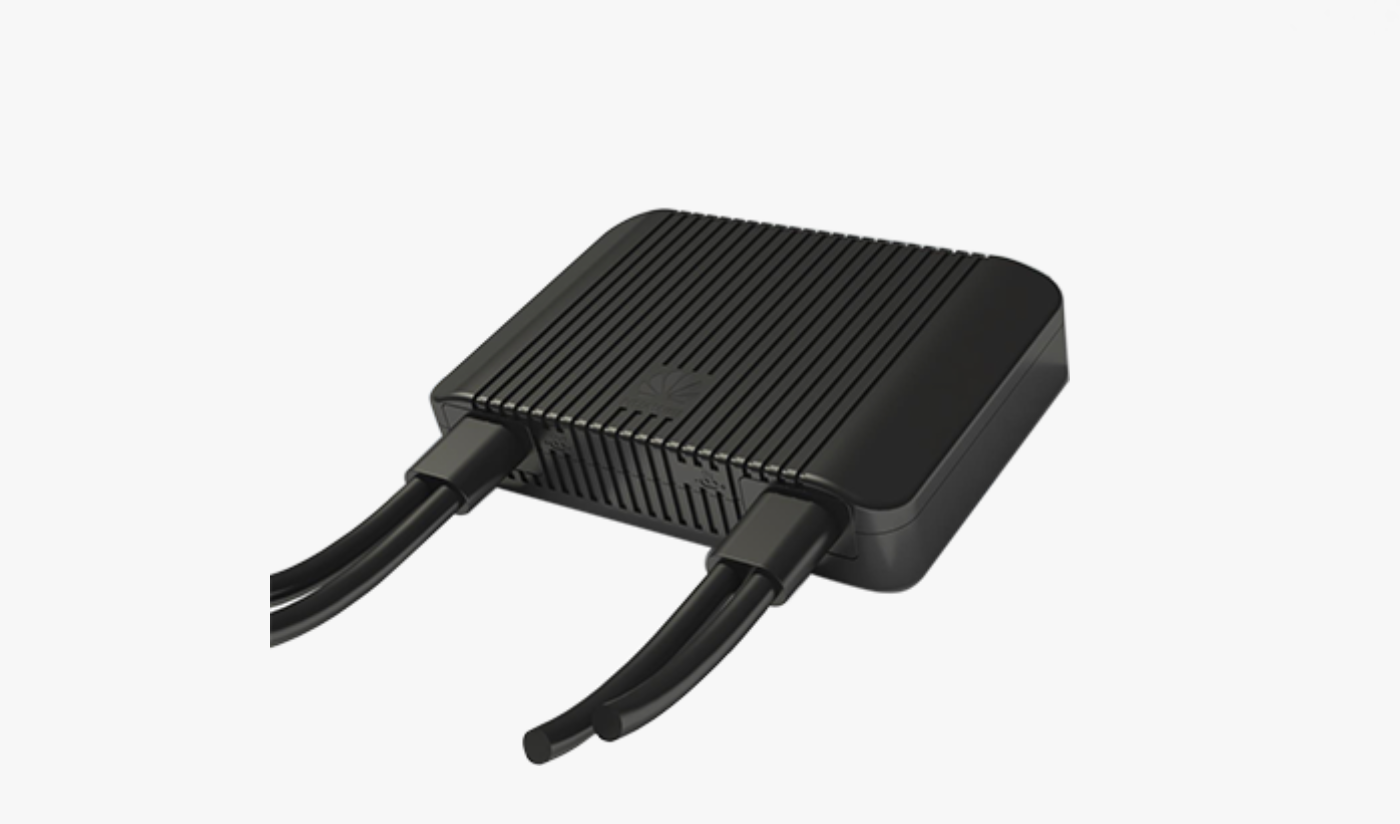
SUN2000P 375W DC Optimiser – about the size of a smartphone
For people who want something larger than a single phase 5 kilowatts, the next largest inverter is a 3 phase 8 kilowatts, but Huawei regard this as a commercial inverter and so it only comes with a straight 5 year replacement warranty.
Who Is Huawei?
Huawei Technologies is a massive Chinese company with 180,000 employees and it flogs its wares in over 170 countries. It’s mostly a telecommunications company. While they are the largest inverter manufacturer in the world, as far as they’re concerned that seems to be a minor detail. Kind of like how I rarely mention that my Canadian, millionaire, supermodel, scientist girlfriend is also an Olympic athlete.
Their headquarters are in Shenzhen, a city with a population equal to half of Australia’s, which is directly north of Hong Kong. The company was founded in 1987 and immediately started pulling apart electronics from overseas to figure out how to make them. They then paid officials to make sure their components were used. Their hard work at reverse engineering and innovative bribery paid off and now they are the world’s largest manufacturer of telecommunications equipment and the second largest manufacturer of smartphones.
Huawei has plans to become a major cloud company. I don’t know what that means, but I only got working internet this year and once I get around to reading it I’m sure I’ll find out what it is.
Inverter Technical Specifications
Here are some technical specifications for the SUN2000l inverters from their datasheet:
One thing I will mention is even the smallest inverter with only 2 kilowatts of capacity has two MPPT (Multiple Power Point Trackers) instead of the one that is common among inverters of that size. This means all the SUN2000l inverters can have 2 independent arrays of solar panels that face in different directions if desired.
Another interesting fact is the inverters are very light at only 10.4 kilograms and they all seem to weigh the same. This makes me wonder if they are all actually 5 kilowatt solar inverters that have been nobbled internally to give them different capacities. (I doubt it this is the case, but it’s possible companies will start doing this at some point.)
Do Not Install Near The Sea
The SUN2000l installation manual says not to install the inverters within 500m of the sea to prevent sea mist corrosion. That’s quite a distance as sea mist corrosion usually isn’t significant more than 200 meters from the shore, but I guess they’re not taking any chances. So if you have beachfront property, or live less than a 6 minute walk from the beach, don’t get a Huawei SUN2000l.
Update 15th May 2019: Huawei Australia has informed me if you contact them they are likely to be able to give written confirmation their warranty will still apply if you install within 500m of the ocean.
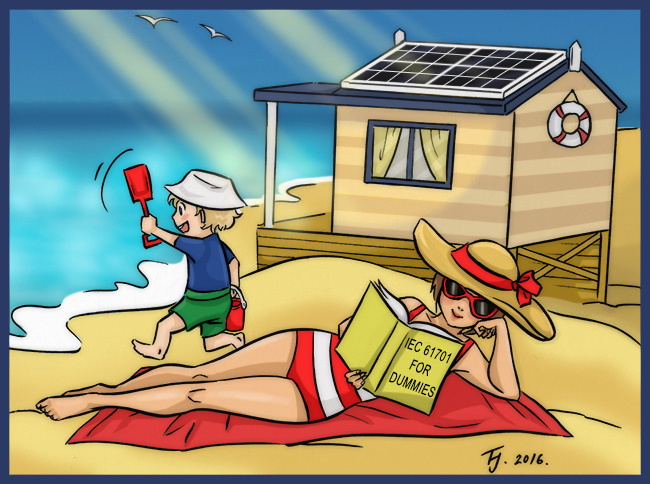
This is not a good application for Huawei solar inverters.
The Only Compatible Battery — LG Chem RESU 7H or 10H
The only battery that is listed as being compatible with the SUN2000l solar inverters is the LG Chem RESU 7H and RESU 10H.
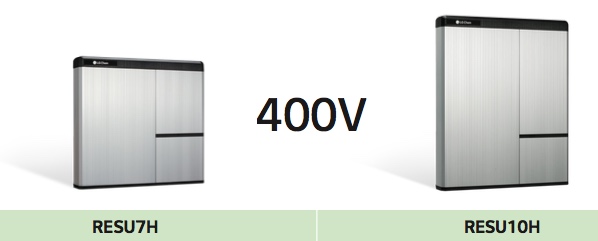
These are the only Huawei compatible batteries
These are what LG Chem calls 400 volt systems, which is considerably more than the 48 volts of their other RESUs. Here are some technical details for the batteries and you can read a little more about them here:
If you get the smaller RESU7H you’ll have 6.6 kilowatt-hours of usable storage and with a 4 kilowatt or larger SUN2000l inverter you’ll be able to get a maximum of 3.5 kilowatts of power from the battery. With the larger RESU10H you’ll have 9.3 kilowatt-hours of usable storage and with a 4.6 or 5 kilowatt SUN2000l inverter you’ll be able to get from 3.5 to 4.5 kilowatts of power from the battery.
The solar inverter is not capable of providing backup, so if the grid fails you will be sitting in the dark along with everyone else. But the grid very rarely fails in cities and major towns. Mostly it’s people in rural areas who have to put up with ridiculous outages. Since I left Queensland I’ve never had a blackout that’s even made my ice cream go soft.1
Warranty
The SUN2000l inverters have a 5 year full replacement warranty with an additional 5 year period after that where they will replace a defective inverter or provide parts for free but won’t pay for labour. This is better than the average solar inverter warranty which normally just 5 years full replacement. One interesting and useful feature of the warranty for replacement inverters is it will last for the length of the original warranty or 12 months — whichever is longer. I can’t recall seeing this condition in any other inverter warranty.
SUN2000l Inverter Pricing
Looking at estimated retail prices the uninstalled cost for a household would range from around $1,220 for 2 kilowatts and $1,830 for 5 kilowatts with the other sizes within that range. Note these estimates are rough and will change with time, the value of the Australian dollar, and possibly with what the CEO of Huawei had for breakfast.
These prices are good for an inverter with an above average warranty and I’d say they are excellent if you are planning to get an LG Chem RESU battery and aren’t too concerned about having backup capability. (Very roughly a RESU10H may set you back $8,000 or more)
Larger Inverters
What Huawei calls residential inverters are all single phase with a maximum capacity of 5 kilowatts. But they make plenty of larger ones. The next step up is the SUN2000-8/12KTL, which is a 3 phase inverter with 8 kilowatt and 12 kilowatt versions. Because Huawei regards this as a commercial inverter its standard warranty is only for 5 years. If you need something even larger Huawei has some humungous inverters. They can help you build a solar farm if you want.
Huawei Optimizers

What will we do with the shaded panel, What will we do with the shaded panel, What will we do with the shaded panel, Early in the morning! Way hey an optimizer, Way hey an optimizer, Way hey an optimizer, Early in the morning!
An optimizer is a little electronic doodad that goes under solar panels and works as a DC converter to adjust the voltage it provides to maximize the output of the panel. Their big advantage is if a solar panel with an optimizer performs poorly it won’t drag down the performance of other panels it’s attached to. This makes them very useful for solar power systems that suffer from partial shading.
Their full title is SUN2000P-375W Smart PV Optimizer and, as you may have guessed from its name, it can be used on panels that are up to 375 watts in capacity. Its warranty is for 25 years which is normal for optimizers overseas but good for Australia. At a retail price of around $90+ uninstalled it’s priced roughly equal or better than its competitors.
It is possible to individually monitor each panel that has a Huawei optimizer but that will require additional equipment and a monitoring unit – and this is an expense I don’t have figures for at the moment.
Huawei Is A Spy?
In 2012 the Australian government prohibited Huawei from tendering for NBN contracts because they were worried the Chinese Government would use them to spy on our internet. You know, that thing that spambots, mafias, Facebook, and the US Government is already using to spy on us.
The Attorney-General’s Department said Hauwei was banned because the NBN is…
“…a strategic and significant government investment. We have a responsibility to do our utmost to protect its integrity and that of the information carried on it.”
So the Attorney-General wants to protect the integrity of the internet? Does he even know what it is? More to the point, when is he going to start? I think half the processing power of my old laptop is being used to mine bitcoins for Ukrainian mobsters. I hope he deals with that before he gets rid of all those horrible pictures of goats in bikinis that I know nothing about.
The Chinese Government definitely engages in ridiculous levels of spying on their own citizens and Huawei is complicit in this. Huawei has also engaged in extremely explicit industrial espionage. But I have yet to see any good evidence that Huawei is using telecommunications infrastructure in countries outside of China to spy for the Chinese government or anyone else. Until evidence turns up, if we want to ban Huawei from bidding on telecommunications contracts, we should use the exact same criteria to vet every other company that wants to bid. After all, we don’t want to strain out a gnat while passing a camel. There are definitely other countries out there that are well known for being stickybeaks.
Huawei’s Future Is So Bright They’ve Got To Wear Shades
Huawei is a massive company that probably isn’t about to disappear. While giant companies can rise and fall it’s hard to see Huawei falling fast enough to not be around to honor warranties in 10 years time. But if you want to be sure you always get high quality warranty service, just make sure you only say nice things about the Chinese government whenever you’re near your inverter.
Footnotes
- Mind you, I don’t go checking it. If the power goes off, I leave that fridge door shut as long as possible. It’s not like it’s a teleporter. I know what’s going to be in there when I do open it. ↩

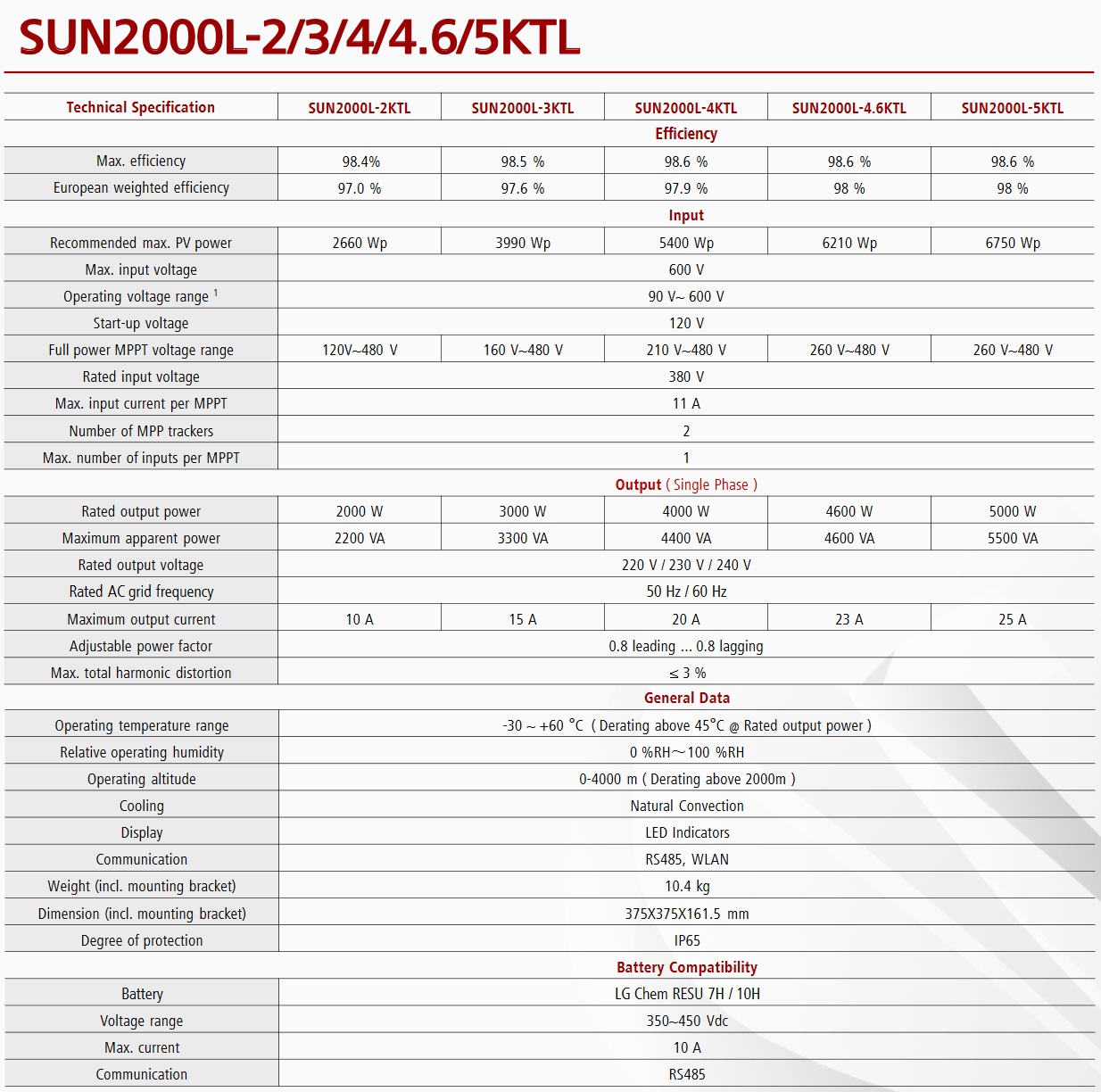
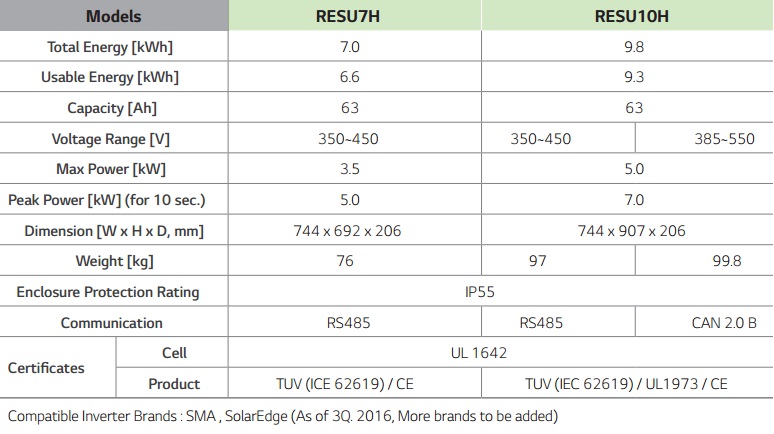
 RSS - Posts
RSS - Posts



I thought that we had to worry about only the Australian and USA governments spying on us.
I didn’t think anyone else would be interested in what goes on in Australia, apart from an zoological perspective (“Look and what those primitive, coal burning people are doing now – they are trying to start a space programme, with coal-fired space rockets”).
Nice review Ronald!
I think they have upgraded the Single phase to full 10 year warranty now, if this can be updated 🙂
https://solar.huawei.com/en-AU/download?p=%2F~%2Fmedia%2FSolar%2Fattachment%2Fpdf%2Fau%2Fservice%2Fdownload%2FSUN2000L_Inverter_Warranty.pdf
Adam
Appears a company has already started possing as Huawei http://huaweisolar.com.au/
A please explain has been submitted to Huawei Australia delegates.
Reminds me of the LG scam a few years ago.
”
Whois response for huaweisolar.com.au:
Last Modified 03-Apr-2018 01:05:46 UTC
Status ok
Registrar Name Web Address Registration
Registrant GOOD DAY MATE PTY LTD
Registrant ID ABN 44133884938
Eligibility Type Company
Registrant Contact ID AM2513624
Registrant Contact Name Andrew MacKeith
Registrant Contact Email infoATsolar4ever.com.au
The registrant is solar4ever.com.au
That is the business trading as Huawei Solar in Australia
solar4ever.com.au also have a web page about Huawei solar products, at
solar4ever.com.au/HuaweiInverterReview.php
Remember to put the “www (dot)” in front of that link.
“But I have yet to see any good evidence that Huawei is…”
They were busted factory-installing spyware in their phones.
But that aside I wish them well with their inverters. It’s good to see an actual Chinese brand name emerge (very rare) and that becomes a powerful incentive to make a decent product.
If that’s the incident I am aware of it wasn’t spyware. It was Chinese software that reported to servers in China. That’s not an unusual thing. If you grab a smartphone at random chances are you’ll find it reporting to servers in China, Ukraine, Russia, the United States, and other bad international actors. My mother’s laptop has Steam on it which is constantly using the “good” trans-pacific fibre optic cable to contact servers in the US. I’d disable the damn thing, but she does enjoy crushing her space orcs.
Huawei was caught spying on the spyware from the u.s. tech company’s , so yes it is true , but not the complete story was ever relayed to the public .
Andy says
There’s never been any evidence of Huwei spying on America! Grant, if you are interested in conspiracy theories I suggest you read Welt Am Sonntag. You might have read about it, it’s the right wing conservative German paper that fingered the Chinese ‘officials’ commonly called diplomats for trying to get positive story from Germany re the beginnings of Covi-19. Sought of what diplomats are paid to do! Anyway, they have another story our media is far less interested in. It seems the US German Ambassador (he’s also their current Acting Director of Intelligence) has been caught offering both Ericsson and Nokia huge sums of money to assist in their development of 5G because Huwei is clearly light years ahead and being American that hate to be beaten. While you’re at it look at the other story. Trump and Spence meeting with Curevac’s CEO, Daniel Minichella to offer a billion plus if Curevac moved their laboratory working on the Covid-19 vaccine to American with one stipulation, if a breakthrough is achieved it has to be own American soil and can only be used by Americans! Of course Daniel Minichella denies it even while Merkel has publicly stated her opposition to the ugly deal. That of course is not the complete story.
The initial response from Huawei Technologies (Australia) Pty Ltd;
Please be noted that this is not a Huawei Official Website.
Huawei Solar official website is solar.huawei.com. For Australia is solar.huawei.com/au.
Thank you!
“I can’t recall seeing this condition in any other inverter warranty.”
If you look at Sungrow’s warranty paper, it does say “If the remaining warranty
period is less than 1 year, it will be automatically extended to 1 year.”
“It is possible to individually monitor each panel that has a Huawei optimizer but that will require additional equipment and a monitoring unit – and this is an expense I don’t have figures for at the moment.”
Yes, it provides panel level monitoring on extra device called “Huawei smart PV safety box” which cost $300 (uninstalled)
Their inverters are connected to your internet, so be careful what you say. Your inverter could be listening!!
really deep and good analysis, very objective
Huawei’s inverter has the largest shipment now
I just got a 5kW one in with 6.6kW of panels. Amazingly Compact. Ready to add a battery when the prices come down.
I did a firmware update on the inverter that completed in 5 minutes and produced 24kW today in Perth.
The apps are very good too on my iPhone for monitoring performance, you get pretty comprehensive information.
It seems to me to be the real deal, a great product at a great price.
I have installed a Huawei Inverter + Trina Panel sytem last month, Huawei inveter performance is very good, and it looks elegant, my wife like it very much!
Well, should i worry about Huawei spying on my power bill? 🙂 hahah…..
Thanks Solarquotes for this great article.
Just love this inverter, it’s so compact and looks premium. Will soon add a battery.
I have been reading the blurbs for Huawei inverters and it may do what I need.
The situation:
1. I currently have a Solaredge SE7300 single phase inverter which I need to chuck because of over voltage problems with my 8.7 kW system.
2. I have 3 phase so the logical thing is to put in a 3 phase inverter.
3. Of course 3 phase inverters do not talk to batteries and also do not keep functioning when there is a blackout. Ahh!
4. I have ascertained Huawei make an 8 kW hybrid inverter which may work, although looks like still no power when the grid goes down.
I hope to get a bit of feedback on this issue and in particular if I can slot in a Huawei SUN 2000-8/12KTL hybrid inverter which will work with the existing Solaredge power optimisers?
Any other suggestions as to how one might get around the problems also appreciated, with the understanding that the 9 month old system cannot just be ripped out and thrown away as it cost a motza.
Thanks all.
Hi Mick
Did you contact the Distributed Network Service Provider in your area? They have a responsibility to prevent over voltage events.
Great article. I also put in the 5K inverter through solar quotes. All working well and like everyone else I also plan to add a battery when it makes sense.
Can the inverter provide power during a blackout when the supported battery is installed or is it a fundamental design limitation?
Hi Tony
I’m afraid the inverter is unable to supply backup power during a grid failure. That ability would add considerably to its cost and most people will want to install it without a battery. But it does look like a cost effective way of installing a RESU10HV battery.
The basis for Huawei being banned from supplying equipments for the 5G infrastructure is not because of any existing evidents of espionage, but it is because of the recent law changes in China explicitly requiring citizens and domestic companies to cooperate. Read Article 7 of the National Intelligence Law:
Any organisation and citizen shall, in accordance with the law, support, provide assistance, and cooperate in national intelligence work, and guard the secrecy of any national intelligence work that they are aware of [emphasis added]. The state shall protect individuals and organisations that support, cooperate with, and collaborate in national intelligence work.
Reference: https://www.aspistrategist.org.au/huawei-and-the-ambiguity-of-chinas-intelligence-and-counter-espionage-laws/
That said, NSA has been exposed by Edward Snowden before, but the line between private enterprises and the state in the US is still not blurred by the law.
Sorry for writing more that I should, as it should be a review of the solar energy product.
I am thinking of a 5kW inverter but live close to the beach.
Would the inverter be at risk if housed inside a house?
Hi Rob
The good news is I recently spoke with Huawei and they said if people get in touch with them and give them the location where the inverter is to be located they normally be able to give you written confirmation the warranty will still apply. They say the 500m limit is overly cautious and they are looking to change it. So it’s likely you will be able to locate it outside and if you are planning to put it inside anyway I’m sure they’d think that’s fine.
Is there any expectation that US / China sanctions & Google recent stance against Huawei smartphone plus Senators eager to further put the boot in to their inverters for US power, going to have any impact on the Huawei inverters more Globablly & in particular for supply & ongoing support in Australia?
A solar company has recommended a Huawei 5kw single phase inverter for my new 4.725kw solar system. My house has 3 phase supply (only a/c on 3 phase). I live very near to the coast (< 150m). Is this the correct inverter to use?
Hi Stuart
I have talked to Huawei and they are normally fine with their inverters being installed close to the sea. You can contact Huawei Australia and get written confirmation their warranty will still apply.
As for the setup you have been recommended, there is nothing wrong with it. Because you have three phase power I would normally recommend a three phase inverter, but only if it is within your budget. Since you’re only installing a 4.725 kilowatt system I would normally recommend increasing that towards 6.6 kilowatts, provided it will fit on your roof, before spending extra to invest in a three phase inverter.
This page quickly explains the difference between single phase and 3 phase inverters:
https://support.solarquotes.com.au/hc/en-us/articles/115001462573-I-have-3-phase-power-Should-I-use-a-3-phase-inverter-or-a-single-phase-inverter-
Before you make your decision you may want to talk to people with solar in your area to see if they have had issues with their inverters shutting down due to grid overvoltage events. If they happen frequently that increases the value of a three phase inverter.
Hi Ronald,
Many thanks for your detailed reply, most useful.
The maximum size of solar system that I can get onto my roof is 4.725kw, and this was after trying a range of options. This is part of the reason why I thought a single phase inverter would be ok and also its future battery compatibility being another benefit.
I will check with others in my area if they have problems with overvoltage events. The solar company also suggested (for the same price) the SolaX 5kw 3 phase inverter, but they considered the Huawei single phase a better quality option.
Huawei has done well in recent testing, although that was for inverters they sell in North America:
https://www.solarquotes.com.au/blog/pvel-solar-inverter-scorecard/
They also have a 5 year + 5 year replacement only warranty compared to Solax’s 5 years. I don’t think Solax is a bad inverter for its price but if you pay more for an inverter you tend to get better quality.
The Huawei inverter is fairly unique in that its standard version can support a battery without additional expense, but it can only support an LG Chem RESU 7H or RESU 10H and can’t provide backup power during a blackout.
Howdy, So let me get this straight, The Huawel inverter is a semi hybrid inverter as it can have batteries connected ( only LG Chem ) with out any additional equipment.
From what I gather, Any inverter can have batteries connected BUT will also require an additional Battery inverter along with the batteries.
If a battery attached to a Huawei inverter cannot supply power in a blackout, what exactly would the purpose of the battery be? I am assuming that the battery provides power during the night when the solar panels are not operational. Also I assume that a blackout would drop power to the inverter therefore preventing it from switching back to the battery. Of course assumptions are always the mothers of disasters!
It’s for storing cheap solar electricity during the day to use instead of expensive grid electricity at night. (It could potentially also be used by businesses to keep demand tariffs low.) The economics of it don’t work out at the moment without a big subsidy, but major price falls are baked into the cake. It’s a matter of when rather than if. Unfortunately, the when is taking a long time.
Whilst, to me, the functionality of a BSS connected to a domestic rooftop PV system inverter, providing a UPS (such as, I believe, is provided by the Goodwe GW-5048-ES inverter), is important, even without the UPS functionality, (and, moreso with that functionality), a domestic rooftop PV system with a BSS has many benefits.
One such benefit, is the energy arbitrage, where the electricity generated by the inverter, where it is in excess of the household load, is diverted into charging the BSS (a BSS may incorporate more than one battery; the BMS of the cited Goodwe inverter, can, I believe, manage two batteries concurrently), so smoothing the peaks of the electricity exported to the grid, reducing wear of the fragile (like the WA SWIS) grid infrastructure that is close to breaking point, event without the additional strain from unmoderated domestic rooftop PV systems.
Now, this is only one of the benefits of BSS’s incorporated in domestic rooftop PV systems, in addition to (where it is included) the UPS functionality, and, sufficient, “in its own right”, even where a domestic rooftop PV system with BSS, lacks the UPS functionality, for state and territory governments to provide no deposit, no fee, no interest, loans for up to ten years, for householders to install, or, upgrade to, domestic rooftop PV systems with BSS, preferably with UPS functionality, especially in these times when “financial stimulus” to economies, is being touted (but not provided).
Oh, and, what I suggested above, is far better that the AEMO and the feral and state governments, punishing us for having domestic rooftop PV systems, by remotely disabling our rooftop PV systems, for the sake of their perverted thrills.
And, it should be remembered, especially when the governments are attacking our domestic rooftop PV systems, that we, who got our domestic rooftop PV systems, stopped the summer rolling grid supply blackouts (t least, the ones here in WA) that were due to the inadequacy of the grid coal fired generators to supply the summer electricity demand.
just a silly question
I am retiring to the remote Philippines and want to install a solar system due to town power being both dirty and unreliable.
To that point i have a Huawei 5ktl supposedly hybrid inverter that i was going to take with me. I have found out it will not function as a emergency power back up without grid to supply the Sino wave .my silly question is if i was to combine it Huawei battery and something like a small inverter to generate a Sino wave could we trick the inverter to thinking the town grid was working. i am worried that i might burn out the small inverter once the batteries are charged or could i set it up somehow that it would work
People have tricked solar inverters into thinking they were on-grid in an off-grid situation, but it is not something I recommend trying. I also think the Philippines has 220 volt 60 hertz power and that may mean the inverter won’t work in the best of situations.